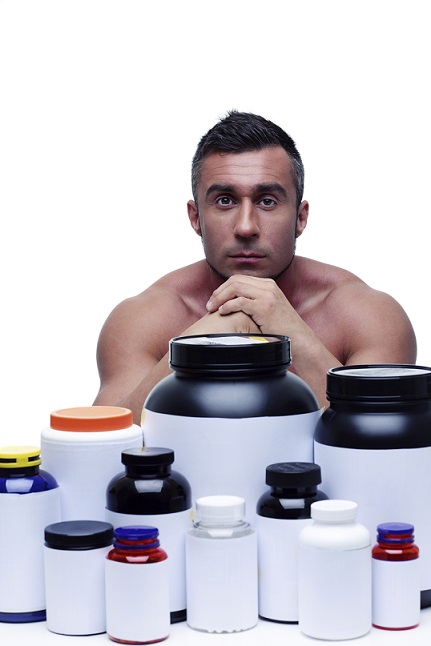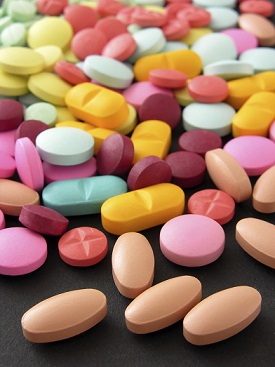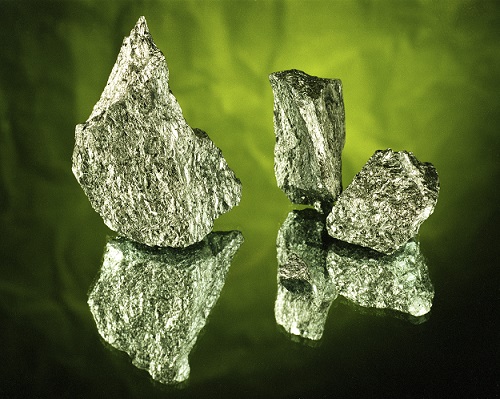According to state of the art scientific research, the cure for acne may be staring us in the face.
This common compound is handled by all doctors in their weekly duties, and administered to patients without a second thought as to the true extent of its powers. This compound was patented in 1960 and first approved for general usage by the FDA in 1968.
Today, this compound remains on the World Health Organisation’s list of essential medical tools. It’s the default compound for treating painkiller overdoses and extreme alcohol poisoning. This compound is about as nondescript as it gets.
The compound that secretly clears acne is N-acetyl-cysteine, a supplemental form of the amino acid cysteine found in eggs and dairy.
NAC lowers acne by 50%
Unlike other acne supplements which are promising yet mostly indirect, NAC is a rare supplement to have studies directly on acne.
We’ve covered this amazing study before, in our 2015 milk thistle article. Scientists divided 56 male and female acne patients into four groups who took either 1) a placebo, 2) 200mcg of selenium, 3) 210mg of silymarin, an antioxidant found in the milk thistle herb, or 4) a 1200mg dosage of NAC daily. The patients were aged between 14 and 30, the prime years for acne.
The scientists tested acne itself, but also various bloodstream biomarkers. They tested malondialdehyde (MDA), a classic indicator of free radical levels, and interleukin-8, a pro-inflammatory chemical which acne patients are proven to have higher levels of (study, study).
With each passing week, the participants’ acne retreated further and further.
With the placebo pill, there were no noticeable changes. The selenium pill achieved a respectable 40% reduction, but with milk thistle and NAC, total acne lesions plummeted by a gigantic 50%.
The selenium performed admirably, and that’s why I recommend that all acne patients inspect their intake, but the NAC supplement won with ease. There’s many possible explanations, particularly that selenium takes far longer to accumulate in the body. With NAC, the benefits kicked in fast and only intensified thereafter; the reduction reached 15% after 2 weeks, 25% after 4 weeks, and 40% after 6 weeks.
Pro-inflammatory chemicals also retreated, with MDA and IL-8 falling by 38.8% and 72% respectively in 8 weeks. Selenium also matched its rival NAC, with 35% and 71% falls, while silymarin was even better, achieving 39.2% and 80%.
Not only did a simple NAC pill have acne, it also beat the prestigious acne mineral selenium.
Precisely how does NAC clear acne?
The mechanism behind NAC’s greatness was also revealed in the study, as after 8 weeks of taking a 1200mg pill daily, bloodstream glutathione rose by 205%.
What’s so special about glutathione? It’s the single most powerful antioxidant which your body makes itself. Glutathione has been dubbed the king of antioxidants and since 2000, the research floodgates have burst open.
Glutathione’s acne powers include 1) hoovering up vicious swarms of free radicals, 2) strengthening your skin against scorching sunlight, 3) preventing the pore-clogging squalene peroxide from being born, and 4) preserving delicate vitamin C molecules.
Read Annihilate Your Acne – get the ultimate diet for clear and glowing skin!
N-acetyl-cysteine works its magic by replenishing your glutathione stores when they’re depleted. To illustrate, consider NAC’s main usage in hospitals worldwide – as an antidote to liver damage caused by painkiller overdoses. Countless painkiller brands such as Paracetamol use acetaminophen as the active ingredient. This compound does successfully cure pain in small doses, but acetaminophen overdoses are the number one cause of acute liver failure in the USA.
Your liver metabolises acetaminophen into a compound called N-acetyl-p-benzoquinone imine, which accumulates in the body. Ordinarily, glutathione-s-transferase binds to NAPQI and detoxifies it, but in overwhelmingly high doses, your bodily stores of glutathione become rapidly depleted, leaving the metabolites free to react with hepatic enzymes, destroy liver cells, and possibly even kill you.
This all-too-common tale is why doctors always keep a box of NAC pills on hand. NAC is the simplest and most effective way to rapidly spike glutathione levels and avert a medical disaster.
The mechanism couldn’t be simpler, as every glutathione molecule in your body is synthesized using the amino acids glycine, l-glutamine, and l-cysteine. An NAC pill simply supplies the cysteine portion.
The other ingredients of glutathione are sulphur and the minerals zinc, magnesium and selenium, which is why selenium performed so excellently above. A 2013 study found that severe acne patients had over 20% less glutathione in their skin cells, with moderate acne patients having just below 20% less.
NAC improves multiple root causes of acne
By sending glutathione soaring, NAC doesn’t only increase the antioxidants on your face.
Other antioxidants like vitamin E are relieved from their antioxidant duties elsewhere, such as protecting delicate eye cells and neurons. Vitamin E is the most important antioxidant for clogged pores, so you want as much to be diverted to skin protection as possible.
Glutathione also protects vitamin A, king of oily skin (or ending it anyway). Vitamin A is transported through the bloodstream by retinol-binding protein, a delicate molecule which free radicals can shatter, if glutathione isn’t there to control them.
Important article – the top 7 natural topical treatments for acne
The clearest real world example is NAC’s storied reputation for curing hangovers. The fatigue, lethargy, and sickness of a hangover don’t come from alcohol itself; they come from a by-product called acetaldehyde created when alcohol is broken down by the liver.
Like NAPQI from paracetamol, acetaldehyde drains your glutathione supplies, allowing NAC to bolster your defences before a hangover ever kicks in. One study found that 200mg worked excellently for hangovers, despite being far below the standard NAC dosage of 500mg.
The story doesn’t end there. For acne, NAC can also benefit…
Chronic inflammation – this 2009 study gave 500mg of NAC to 24 patients with type 2 diabetes. After four weeks, levels of C-reaction protein (the most popular biomarker of inflammation) rose by 18% in the placebo group, but fell nicely by 9% in the NAC group.
Next there’s this 2015 study on mice, which tested three supplements: NAC, bromelain from pineapple, and alpha lipoic acid. All three reduced inflammation, which visibly translated to the mice’s skin as reduced numbers of inflammatory cysts (sounds good for acne).
This study, meanwhile, specifically found that NAC reduced systematic inflammation in the small intestine, as did a second NAC study published just this month (February 2016). This could control the random inflammatory reactions some acne patients get to mainly clean foods.
Insulin – insulin resistance is when your insulin molecules no longer function properly, forcing your body to increase levels to compensate, and therefore multiplying insulin’s oily skin dangers.
This 2002 study found that high doses of NAC, 1.8 grams daily to be exact, improved the insulin sensitivity of women with polycystic ovary syndrome after 5-6 weeks. Even better, blood insulin levels fell.
A 2011 study also tested women with PCOS, this time using the diabetes drug metformin as a comparison. Amazingly, NAC matched effortlessly matched this powerful pharmaceutical drug, reducing insulin resistance and fasting insulin levels. The mechanism wasn’t explained, but this 2003 study observed increases in insulin sensitivity and commented that lowered oxidative stress was probably responsible.
NAC – an impenetrable shield against environmental toxins
As a supplement, NAC has one particularly distinctive power – defending your skin against insidious heavy metals.
Whether this comes from boosting glutathione, which is also a stage 2 detoxification agent, or a special power of NAC itself is unconfirmed:
LEAD: in factory workers with lead poisoning, n-acetyl-cysteine can reverse antioxidant depletion and lower blood levels of lead itself (study, study).
CADMIUM – a heavy metal which was formerly one of America’s most popular pesticides, only to be discontinued after reports of horrific side effects surfaced. NAC can accelerate recovery from cadmium toxicity (study) and protect against cadmium-induced liver damage in rats (study).
Luckily for acne, NAC can prevent the antioxidant depletion from cadmium (study), and also the uptake of cadmium into cells (study, study).
SODIUM FLUORIDE – NAC acts as a shield against the damage from toxic toothpaste and the water additive fluoride, particularly oxidative stress (study, study, study) and reproductive problems (study).
Why vitamin C is the acne nutrient you cannot ignore
ARSENIC – a uniquely dangerous toxin for acne. This heavy metal not only increases oxidative stress, but also the pore-clogging protein keratin.
NAC has successfully protected against arsenic-induced oxidative stress in three studies (study, study, study), and even saved one 32 year old man’s life after a failed suicide attempt using arsenic-laced ant poison (study). The man’s condition deteriorated for 27 hours and only recovered after doctors gave him a last ditch megadose of NAC. He was discharged 24 hours later.
MERCURY – there’s a big debate here, as many natural health gurus insist that NAC interferes with mercury detoxification, or allows it to be transported across the fateful brain-blood barrier. However, all the studies I’ve seen have been excellent.
NAC is a quick-acting antidote for mercury poisoning (study), can prevent mercury toxicity in mice (study), and can increase the urinary removal of methylmercury, the most deadly form in humans (study).
As for the brain fears, it’s highly unlikely, because this and this study found that NAC reduced mercury-induced neurotoxicity in the hippocampus of rat brains
Take NAC for brain improvements
As for NAC’s wider benefits, one that undoubtedly stands out most is brain health.
First of all, NAC is spreading like wildfire on the internet as a simple yet effective treatment for depression. This double-blind, placebo controlled trial supported the idea too: “NAC appears a safe and effective augmentation strategy for depressive symptoms in bipolar disorder“.
NAC supercharges glutathione, and GSH has a dual function, acting both as a super antioxidant and as a stage 2 and 3 detoxification enzyme. Therefore, taking NAC can increase the clearance of a swathe of environmental toxins hiding in our world. Aluminium accumulation accelerates the amyloid plaque formation behind Alzheimer’s, fluoride can suppress IQ scores at all ages, while phthalates in plastic can suppress testosterone. Mercury is specifically linked to depression.
The less environmental toxins roaming around your body, the sharper your brain will be (not literally).
The downsides of NAC
NAC isn’t a perfect supplement, and like milk thistle, its first flaw is that its central power is hardly unique.
If you’re deficient in zinc, magnesium and selenium, then either will increase glutathione levels just as strongly in the long run. In fact, these are the central glutathione ingredients which you simply cannot ignore.
Likewise, the amino acid cysteine is easily obtainable from eggs and dairy, or even better, the super-concentrated source of whey protein. Grass-fed gelatin provides the full spectrum of amino acids, and is probably an all-round superior supplement to NAC. Its glycine content boosts glutathione output, but also increases collagen by joining forces with its proline content.
It’s possible that if you have these basic glutathione ingredients in place, taking NAC will add very little on top.
Raw honey – a natural secret for wiping out acne bacteria
Then there’s the looming question of side effects, which even include skin problems such as flushing, red rashes and itchiness. One much feared consequence is that NAC forms a red blood cell-derived molecule called nitrosothiol which tricks your body into identifying an oxygen shortage. According to a mouse study, high doses of NAC can therefore cause pulmonary arterial hypertension (PAH), when the arteries in your lungs narrow and lung blood pressure rises dangerously.
Additionally, when pushing the boundaries of clear skin, I’d always recommend whole foods over one isolated molecule, because they have a far more complex profile of natural compounds.
Blueberries are loaded with anthocyanin antioxidants but simultaneously contain the rare pterostilbene, while broccoli also boosts glutathione while providing 100% of the RDI for vitamin C.
Then again, NAC supposedly has additional powers itself. The fate of NAC really hinges on whether glutathione is its sole speciality. If it isn’t, then NAC is far more worthwhile for acne.
Verdict – and the best product
Overall, the fact that NAC slashed acne counts by 50% speaks for itself.
Essentially, while you should always cover the basics of glutathione first (the minerals, glycine, and dietary cysteine), NAC is superb if you’ve got money to burn on an extra weapon. You’ll particularly benefit if you’re vegan, because your skin will be hungry for extra cysteine.
The lung-narrowing theory was only demonstrated once using enormous dosages. Plus, the danger zone is 2 grams daily, and to improve acne you only need 600mg, or even 200mg according to one of hangover studies.
I’d personally recommend MSM over NAC for fairly cheap, non-nutrient supplements, but NAC is a worthy experiment to try. My recommended product is this Thorne Research N-Acetylcysteine (amazon link), which is not only free from toxic fillers, but is a delayed digestion formula, which gives you a whole day of nicely elevated glutathione.
NEXT: get the full skin-clearing diet and wave acne goodbye forever
Thanks for reading!





Would you prioritize NAC or Vitamin E for anti-inflammatory benefits relating to acne?
I would definitely recommend vitamin E first. NAC is a bonus supplement; vitamin E is one of the most important nutrients in the human diet.
Thanks for the all the info. I’m on my 3rd day of NAC but it’s making me itch!
Hi there Richard, do you think NAC could also help remove pesticides from the the body?
Greetings Ellen, the answer is yes because NAC increases glutathione, which doubles up as a detoxification form called glutathione-s-transferase in addition to its antioxidant functioning. Many chemicals and heavy metals are metabolised by GST in the first stage of their detoxification. So NAC is one among a few you could take, although unfortunately, the FDA is now targeting NAC supplements with a ban, for the flimsiest of reasons. Amazon.com has already removed all their NAC supplements although they’re still available in non-US countries. If you can acquire it then NAC would be a strong pesticide buffer in addition to selenium, zinc and magnesium as the basics.
I took a lot of NAC while I was sick with flu. My skin was beautiful by the time I recovered. Now I wonder if this is why. Hmmm, back to taking NAC. It’s getting hard to find :(
Hi Richard,
any chance it will protect against air pollution chemicals it sadly seems impossible to escape from these days?
Cindy
Yep, it’ll give you some shield, as will antioxidants generally.